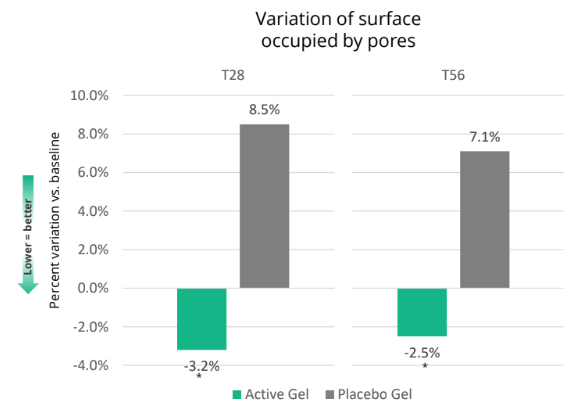Enhanced TDS
Identification & Functionality
- Country of Origin
- Function
- Filler
- Industrial Additives Functions
- Plastics & Elastomers Functions
- Product Code
- MITM12251
- Technologies
- Product Families
Features & Benefits
- Industrial Additives Features
- Labeling Claims
- Materials Features
- Processing Information
- 3M™ Glass Bubbles HGS6000 bubble breakage may occur if the product is improperly processed.
- To minimize breakage, avoid high shear processes, point contact shear such as gear pumps or 3-roll mills, and processing pressures above the strength test pressure for each product.
- Product Benefits
- Successfully and predictably reduce the control fluid density
- Incompressible and more homogeneous control fluid properties compared to aerated systems
- Eliminate the need for specialized equipment used in foamed cement
- Compatible with both water and oil based systems
- More economical and allow a greater density reduction window than synthetic oils
Helps achieve and maintain the target density throughout the drilling operation:
- Light - when synthetic oils are used as base fluid, densities as low as 5.5 lb/gal (0.66 kg/l) can be achieved.
- Tough - resistant to shear and impact forces when circulating through bit nozzles and impacting formation walls.
- Offer the potential for higher performance through increased rate of penetration (ROP)
- Reduce your cost through reconditioning and reuse of the lightweight fluid
3M™ Glass Bubbles HGS6000 in cementing
- Consistency batch-to-batch, location-to-location
- Broad effective density at any pressure
- Improved density reduction capacity – cement slurry density values below 9.0 lb/gal (1.1 kg/l) have been achieved.
Low-density, high-strength 3M Glass Bubbles HGS Series are lighter and stronger and help achieve higher strength-to-weight cement designs.
Light weight cement slurries made with 3M Glass Bubbles HGS series help prevent problems associated with fluid loss/lost circulation such as reduced top of cement (TOC) and thus the need for remedial squeeze. Additional benefits include the potential for:
- Reduced Wait-On-Cement (WOC)
- Reduced need for multi-staging
Applications & Uses
- Composites End Use
- Industrial Additives End Use
- Plastics & Elastomers End Uses
- Plastics & Elastomers Processing Methods
- Markets
- Applications
- Product Applications
The use of 3M™ Glass Bubbles HGS6000 as density reducing agents for drilling, completion, work-over fluids, and cement slurries offers the potential for:
- Reduced Non Productive Time (NPT)
- Improved well integrity
- Increased well productivity
3M Glass Bubbles HGS series are engineered hollow glass spheres specially formulated for a high strength-to-weight ratio. This allows greater survivability under demanding downhole conditions.
Properties
- Physical Form
Regulatory & Compliance
Technical Details & Test Data
- 3M Glass Bubbles (GB) Effective Densities at Pressure

Safety & Health
- Safety Information
For worker protection, please follow your company’s procedures for safety and proper PPE, and consider the following:
- Select and use eye/face protection to prevent contact based on the results of an exposure assessment. Safety Glasses with side shields are recommended.
- Wear respiratory protection if ventilation is inadequate to prevent overexposure. An exposure assessment may be needed to decide if a respirator is required. If a respirator is needed, use respirators as part of a full respiratory protection program. Based on the results of the exposure assessment, select from the following respirator type(s) to reduce inhalation exposure: Half facepiece or full facepiece air-purifying respirator suitable for particulates. (For additional information about personal protective equipment, refer to the product Safety Data Sheet.)
- Provide local exhaust ventilation at transfer points. Use general dilution ventilation and/or local exhaust ventilation to control airborne exposures to below relevant Exposure Limits and/ or control dust. If ventilation is not adequate, use respiratory protection equipment.
Principal Information
- Group Principal Number
- S002409
- Principal
Storage & Handling
- Storage and Handling Conditions
Storage: Ideal storage conditions include unopened cartons in a dry and temperature-controlled warehouse
- Carefully re-tie opened bags immediately after use.
- If the polyethylene bag is punctured during shipping or handling, seal the hole as soon as possible or insert the contents into an undamaged bag.
- During hot and/or humid months, store boxes in the driest, coolest space available.
If controlled storage conditions are unavailable, carry a minimum inventory and process on a first in/ first out basis.
Handling: Due to the low weight and small particle size of 3M™ Glass Bubbles HGS6000, dusting may occur while handling and processing. To minimize the dusting potential during handling, consider the following:
- Do not open 3M™ Glass Bubbles HGS6000 packages until ready to use.
- Upon opening, have an air siphon near the opening to pull away airborne particles. (Dust collection equipment may be required – check local OSHA and other applicable regulations.)
- Remove 3M™ Glass Bubbles HGS6000 with a suction “wand” (with slight positive pressure aeration) and transfer to a closed mixing tank inside fully contained piping. If a closed mixing tank is not available, use dust collection equipment as close as practical to the point of entry. Pneumatic conveyor systems have been used successfully to transport 3M Glass Bubbles without dusting from shipping containers to batch mixing equipment. Equipment vendors should be consulted for recommendations.
- Static eliminators should be used to prevent static buildup.
Other
- Color (SDS)
- White
- Odor (SDS)
- Odorless
- Temperature Control
- No
- USA/DOT UN Number
- Not Applicable
- SDS Physical and Chemical Properties
Value Units Test Method / Conditions Density (SDS) 0.1-0.6 g/cm³ g/cm³ Softening Point (SDS) min. 600.0 °C °C Specific Gravity (SDS) 0.1-0.6 - Volatile Content (SDS) max. 0.5 %(W/W) %(W/W) - Shelf Life & Stability
Value Units Test Method / Conditions Shelf Life 0.0 d d
